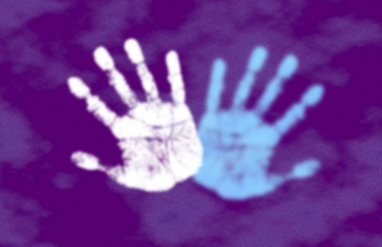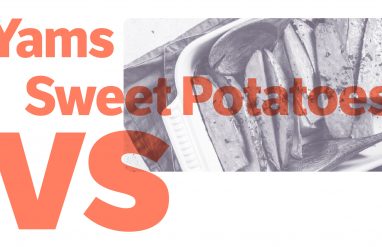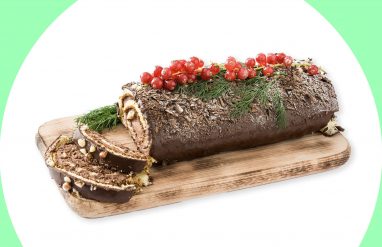From blue eyes to blue skies, blue is one of those words we use often in writing or in speaking. But, because there are so many different shades of blue, it’s usually helpful to use a more specific word to describe the exact shade of blue you’re talking about. Blue has dozens of synonyms, and each of them describes a hue that is slightly unique. Some are darker than others, some contain more grey or green, and some of them have exceptionally unique origin stories. Let’s dive in and take a look at 15 unique words you can use to describe the color blue.
15 Cool And Refreshing Words For The Color Blue

azure
Azure is “the blue of a clear or unclouded sky.” It’s a word you might use when describing a bright, almost purplish shade of blue, just like the sky on a clear summer day or the ocean when the light is reflecting off of it. Azure ultimately comes from an alteration of the Persian lāzhuward, referring to lapis lazuli, and the first known use of the word took place between the late 13th and early 14th centuries.

sapphire
Sapphire is most recognizable as the name of a deep blue gemstone, but it can be used to describe anything else that matches the vibrant, sparkling blue of that gemstone. The word was first recorded in English in the mid-1200s, but it has a long history in other languages and parts of the world. It derives from the from Greek sáppheiros, which may have origins in the Sanskrit śanipuriya, meaning “dear to (the planet) Saturn.”
Learn about another word with close connection to the word Saturn here.

ultramarine
Ultramarine sounds like a name for some kind of superhero. While that’s not exactly the case, the term is used to describe an especially deep and vivid, almost electric or neon shade of dark blue. Like some other colors, one of the early uses of ultramarine was to describe a blue pigment that was used in paints and ink. The term has been in use since the late 16th century.

teal
You may think of teal as a shade of green, but actually, it’s a medium to dark greenish shade of the color blue. The color is popular today on everything from clothing to paint to accessories. Believe it or not, the term may actually have come to us from ducks. It derives from the low German telink and was first used to refer to a type of freshwater duck with the distinct greenish-blue coloring on its head and wings.

beryl blue
Beryl is a mineral that can exist in shades of blue, red, white, gold, or green. When polished and sanded into a gemstone, you might recognize the blue variety of this mineral as an aquamarine (whose name is also a word for blue). Beryl blue is a light, greenish-blue color, and if you go with this word to describe a shade of blue, you’re certainly not alone. Beryl blue has been in use in English since the late 1800s!

indigo
Indigo is a shade of blue that sometimes leaves people confused. Is it blue or is it purple? In reality, indigo covers a range of blue hues, from deep violet blue to one that’s darker and more grayish. The word comes to us from Spanish and Portuguese (ultimately from a Greek word for Indic), and has been in use in English since at least the 1500s. Certain plants also produce an indigo dye that is used for dyeing clothing and other textiles.

cerulean
Cerulean is another word that’s often used to describe a “deep, sky blue.” It comes from Latin caerule, which means “dark blue,” derived from caelum, or “sky.” Of course, the sky isn’t the only thing that can be cerulean. This is a great word to use when describing deep blue oceans, eyes, and objects as well.

navy
If you’re describing a dark, inky shade of blue, navy may be the right word to choose. First recorded in the last 1800s, this term came about because of the dark blue naval uniforms in the United States and the United Kingdom. Some say this color conveys power and authority!
When you’re by the beach catching the ocean breeze, can you clearly define the difference between windy, breezy, and blustery? Learn here.

turquoise
Turquoise is among the most recognizable words and colors on this list. The word derives from a French word meaning “Turkish (stone)” and was first recorded in English in the 14th century. You probably know it as the name and hue of an opaque mineral that’s used to make jewelry. The word turquoise can be used to describe anything that shares the distinct greenish-blue color of that mineral.

cornflower
Cornflower blue is a vivid light blue with white undertones. It gets its name from the flowers of the same name, which are also sometimes called bachelor’s-button or bluebottle. Cornflower was first recorded in English in the late 1500s. The shade was a favorite of Johannes Vermeer, who painted The Girl With a Pearl Earring, among other famous works.

royal blue
Feeling royal? Most of us are familiar with the deep, rich tones of royal blue. What you may not know is that this color actually has a royal backstory. Royal blue is said to have been developed in England, where it was used in a competition to create a blue fit for royalty that was ordered and judged by King George III. Eventually, the color was used to make robes for Queen Charlotte, who reigned from 1744–1818.

peacock blue
Would you be surprised if we told you peacock blue resembles the blue of peacock feathers? Probably not, though that fact doesn’t make the color any less striking. Peacock, in reference to blue, was first recorded in English in the late 1800s. The color is a “lustrous greenish blue” that would be at home in any palette of jewel tones.

cyan
If you’re trying to jazz up your writing, cyan is a far more interesting word than simply using blue. First recorded in the late 1800s, cyan is a moderate ocean-like blue that sits in between green and blue on the color spectrum. The word comes from the Greek kýanos, or “dark blue,” though it looks more like a beachy blue you might encounter watching the waves on a deserted island.
Think all these color words are interesting? Then you should upgrade from “interesting” and use one of these words instead.

cobalt blue
Looking for the right word to describe an exceptionally vibrant, striking blue? Give cobalt a chance. Cobalt is used to describe a “deep blue to a blue-greenish color.” It’s also sometimes called Thénard’s blue, after Louis Jacques Thénard, the scientist who discovered the compound that creates cobalt blue pigment, which artists used for paint in the 19th century.

Check out our word list!
Save these words for your next poem, story, essay, or other project using our convenient word list. From this list, you can use our digital flashcards to memorize the definitions of each term, test your spelling, and even take our blue word quiz to see how many of the synonyms for blue you’ve memorized.
Looking for more color in your life? Check out our words for the color green!















